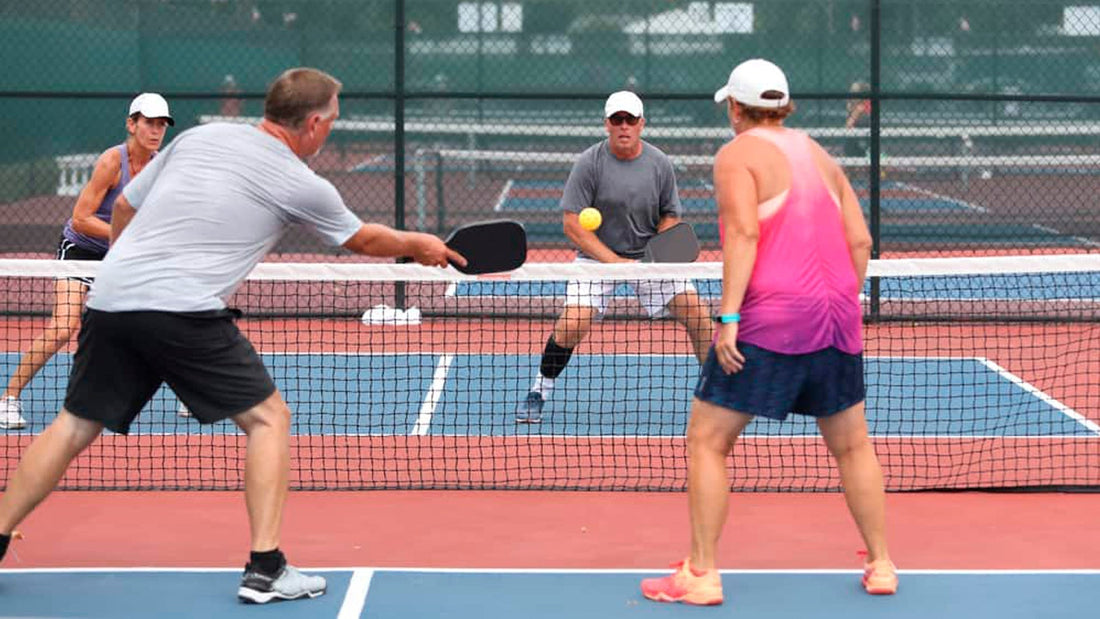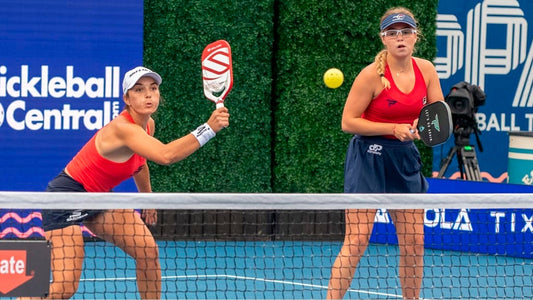
Pickleball Positioning: Where You Stand Changes the Game
Share
“Tactics is knowing what to do when there is something to do. Strategy is knowing what to do when there is nothing to do.” — Savielly Tartakower
Positioning in pickleball is just as critical as your swing. You can have the perfect serve or the fastest reflexes, but if you’re standing in the wrong place at the wrong time, you’re giving away points before the rally even begins.
Whether you’re a beginner or chasing medals in tournaments, understanding court positioning can turn your game around—literally and figuratively. Let’s break down how and why where you stand changes everything.
1. The Golden Zone: At the Kitchen Line
After the serve and return, most rallies are won or lost at the non-volley zone (NVZ), also known as the kitchen line. Getting up to the kitchen line quickly and maintaining that position is crucial for control, reach, and offensive shot-making.
Why it matters:
- You take time away from your opponents.
- You can block or redirect shots more effectively.
- It’s the best place to dominate soft game play like dinks.
Pro Tip: Don’t linger midcourt after your third shot; transition quickly and together with your partner to the NVZ.
2. Midcourt: The Danger Zone
Often called “no-man’s land,” the area known as the transition zone e is where most unforced errors and pop-ups happen. If you’re stuck here, you're vulnerable to attacks and have little time to react.
When it’s okay to be here:
- Briefly, during a transition after serving.
- When backing up to defend a lob, but recover fast.
Key Move: Learn to reset the ball and move forward after soft third shot drops or blocks.
3. Baseline: Your Starting Block
When serving or returning, you begin at the baseline. The moment the ball is in play, your mission is to get to the kitchen line strategically. Hanging back means giving your opponent’s control.
Common mistake: Many beginners stay back and try to rally from the baseline like it’s tennis. In pickleball, that’s a losing formula.
4. Doubles Play: Covering the Court Together
In doubles, court awareness and partner positioning are everything. Whether stacking or playing traditional, make sure:
- You and your partner move as a unit.
- You maintain a “wall” at the net.
- You fill gaps if your partner is pulled wide.
If one player is at the kitchen line and the other is still back, your team is exposed. Match your partner’s depth to stay in sync.
5. Anticipation & Adjustments
Positioning isn’t just about where you start, but how you adjust during play. If your opponent tends to lob, step back a bit. If they dink well, crowd the NVZ slightly. If they blast drives, prepare for quick reactions by squaring your stance and softening your grip.
Game Point
Great players aren’t just where the ball is. They’re where the ball is going. Learn to read the game, cover your zones, and master your transitions. The smartest footwork often beats the strongest forehand.
In pickleball, your position is your power. Own your space, and you’ll own the court.
See you on the courts!



